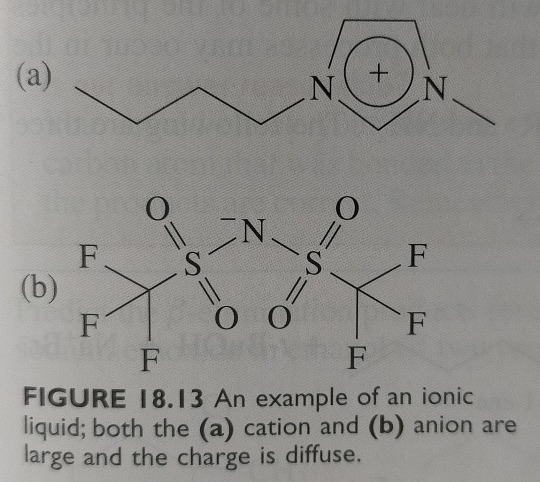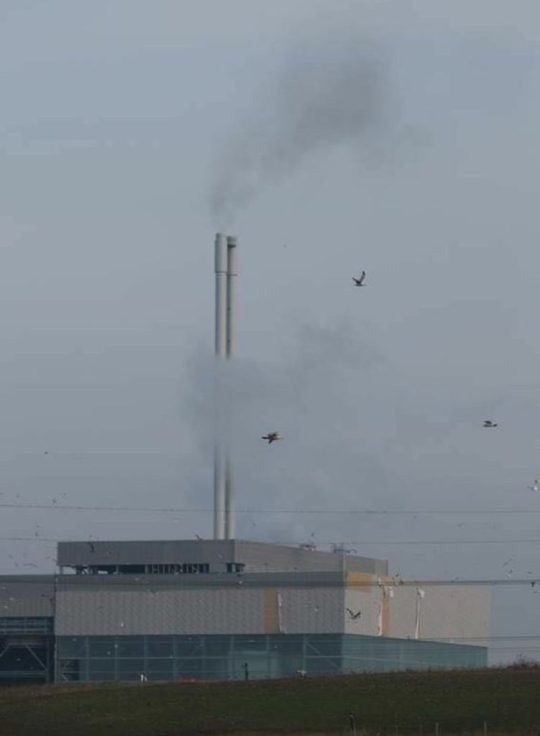#Volatile organic compounds
Explore tagged Tumblr posts
Text
It may look like an innocent green plant, but its name evokes something far closer to a robot or interstellar rocket. Neo Px is a bioengineered plant capable of purifying indoor air at an unprecedented scale, the first in a potentially long line of such super-powered organisms. "It's the equivalent of up to 30 regular houseplants in terms of air purification," said Lionel Mora, co-founder of startup Neoplants. "It will not only capture, but also remove and recycle, some of the most harmful pollutants you can find indoors." Five years ago, the entrepreneur met Patrick Torbey, a genome editing researcher, who dreamed of creating living organisms "with functions." "There were plants around us, and we thought that the most powerful function we could add to them was to purify the air," said Mora, during a tour of a rented greenhouse in Lodi, California, two hours from San Francisco.
Continue Reading.
#Science#Plants#Environment#Biology#Biotechnology#Bacteria#VOCs#Volatile Organic Compounds#Neo Px#Pothos
143 notes
·
View notes
Text

New technology for customized air purification of toxic gases
Volatile organic compounds (VOCs) in daily products such as paints, adhesives, furniture, cosmetics, and deodorants make our lives easier. However, constant exposure can cause serious health problems such as respiratory illness, headaches, dermatitis, and cancer. Natural ventilation is the most effective way to reduce VOCs in indoor air, but recently, air purifiers have become a common method to maintain indoor air quality due to the frequent extreme outdoor condition (e.g., high concentration of fine dust, heat waves, and extreme cold). Generally, air purifiers remove VOCs by adsorption using activated carbon, which has a non-polar carbon surface and a large specific surface area. This activated carbon can effectively remove non-polar substances such as toluene and benzene, but cannot remove polar substances such as ketones and aldehydes.
Read more.
21 notes
·
View notes
Text
One area has been reducing the use of volatile organic solvents and replacing them with ionic liquids (see figure 18.13).

"Chemistry" 2e - Blackman, A., Bottle, S., Schmid, S., Mocerino, M., Wille, U.
#book quotes#chemistry#nonfiction#textbook#green chemistry#environmentally friendly#volatile organic compounds#solvents#ionic#liquids#cation#anion
3 notes
·
View notes
Quote
According to Cristina Davis, a professor of mechanical and aerospace engineering at the University of California, who has been working for years to build instruments that can detect volatile organic compounds, that is a possibility. She explains that if, for example, there are 50 volatile compounds emitted by each different Xylella-infected plant species, it could be that a portion of those compounds are shared between all. "I think that there's a really reasonable expectation that you could train an animal like a dog or a sensor to be able to detect that over time," Davis says. In fact, in 2014, Davis and her team managed to use an advanced instrument, a differential mobility spectrometer, to spot citrus plants infected by the bacteria Candidatus Liberibacter.
Agostino Petroni, ‘The plan to save Italy's dying olive trees with dogs’, BBC
#BBC#Agostino Petroni#Cristina Davis#University of California#volatile organic compounds#Xylella#detection dogs#differential mobility spectrometer#citrus plants#bacteria#Candidatus Liberibacter
2 notes
·
View notes
Text
Many organic compounds are emitted from construction materials, furnishings, and consumer products in the building.
"Environmental Chemistry: A Global Perspective", 4e - Gary W. VanLoon & Stephen J. Duffy
#book quote#environmental chemistry#nonfiction#textbook#voc#volatile organic compounds#emissions#air pollution#construction materials#furnishings#products#building
0 notes
Text
youtube
#Portable colorimetric sensor#Fe nanozyme#surface-active sites#artificially ripened fruits#VOC detection#ethylene detection#calcium carbide#food safety#ripeness detection#porous nanozyme#colorimetric changes#fruit quality#sensor array#portable device#on-site testing#chemical analysis#volatile organic compounds#nano-technology#agriculture innovation#food inspection.#Youtube
0 notes
Text
Global VOC Regulations in Cosmetic Products: Rationale and Practicalities
Volatile Organic Compounds (VOCs) are a large group of organic chemicals that have high vapour pressure at room temperature. This characteristic allows them to evaporate easily into the atmosphere, contributing to air pollution and potentially causing health issues. VOCs are found in many everyday products, including cosmetics, paints, and cleaning agents. In the context of cosmetic products,…

View On WordPress
#CARB#cosmetics regulations#environmental impact#EU regulations#formaldehyde#fragrances#health risks#propellants#solvents#Switzerland#UK regulations#US regulations#VOCs#volatile organic compounds
0 notes
Link
In the dynamic landscape of the rubber industry, the transformative power of silane coupling agents is reshaping the way rubber products are manufactured and utilized. These compounds, with their exceptional mechanical properties, processing capabilities, weather resistance, and chemical stability, play a crucial role in enhancing the strength, durability, and overall performance of rubber goods. From tires to seals, cables to conveyor belts, the application of silane coupling agents extends across a wide array of products, demonstrating their versatility and effectiveness in various industrial sectors. Moreover, by reducing the emission of volatile organic compounds during production and improving fuel efficiency, these agents are not only enhancing product performance but also contributing to a greener and more sustainable manufacturing process. The integration of silane coupling agents into rubber production signifies a significant step towards achieving higher standards of quality, efficiency, and environmental responsibility in the industry.
0 notes
Text
#africa#air pollution#bees#birds#candice gaukel andrews#conservation#honey#honey badger#indigenous knowledge#interspecies cooperation#mozambique#native americans#natural habitat adventures#nathab#nature#ozone#pollinators#science#science and environment#scientific research#south africa#tanzania#vocs#volatile organic compounds#western science#wild#wildlife#world wildlife fund#wwf
0 notes
Text
Tree Planting to Address Climate Change
You may have noticed that we are not doing much about climate change. People wave their arms and say electric vehicles, to be powered by solar energy will solve the problem. Thence, having found the solution they do nothing. They also do not realize that a lot of fossil fuel is consumed to make electric vehicles and their batteries. Then there is the question of the electricity required. If you…
View On WordPress
0 notes
Text
These chemicals (known as volatile organic compounds) can occur in gaseous form, which means we can inhale them. But there’s a sub-group of volatile organic compounds, called semi-volatile organic compounds. These can occur both in gas form and absorbed on solid surfaces (including all indoor surfaces, as well as dust).
The harm a chemical causes differs depending on how it enters the body.
Ingested chemicals pass through the intestines and liver before entering the blood.
Inhaled chemicals first pass through the lungs where they may be absorbed directly into the blood.
Chemicals that penetrate the skin can also directly enter the bloodstream.
You don’t even need to have an open wound, as the chemicals can be absorbed directly through the skin.
#volatile organic compounds#air pollution#indoor air#skin absorption#inhalation#ingestion#hazardous chemicals
0 notes
Text
The air coming out of office buildings in urban areas may be more polluted than once believed, Purdue University researchers say. A research team led by Brandon Boor, associate professor in the Lyles School of Civil Engineering, has published a new study in the journal Cell Reports Sustainability finding that modern buildings continually release volatile organic compounds (VOCs) to outdoor air and are likely to be an important contributor to the VOC burden of the urban atmosphere. The team conducted direct measurements of outdoor-indoor air pollutant exchange in a high-performance office building using state-of-the-art air quality instrumentation and an advanced building automation platform. "We traditionally think of filtering the outdoor air entering our buildings. Based on the findings of our study, we now need to consider cleaning the air leaving our offices, homes and schools to reduce VOC emissions to the outdoor environment," Boor said.
Continue Reading.
63 notes
·
View notes
Text
Licensed to print money: incinerator's five latest breaches
Viridor’s polluting incinerator at Beddington Lane broke the strict terms of its operating licence five times during December, according to data released by the operator. Smoke stacks: the Beddington incinerator, polluting our air since 2018 Viridor failed to issue its usual two-weekly update during December – at a time when the Environment Agency was considering the profit-hungry multi-billion…

View On WordPress
#Beddington#Beddington incinerator#Beddington Lane#Croydon#Environment Agency#Infant mortality#Kingston#Merton#Pollution#radioactive waste#Scott Roche#SLWP#South London Waste Partnership#Sulphur dioxide#Sutton#Viridor#Volatile Organic Compounds
0 notes
Text
Figure 4.8 plots ozone isopleths (contours of constant concentration) as a function of both nitric oxide and hydrocarbon concentration.

"Environmental Chemistry: A Global Perspective", 4e - Gary W. VanLoon & Stephen J. Duffy
#book quotes#environmental chemistry#nonfiction#textbook#ozone#graph#isopleth#contour#volatile organic compounds#voc#nitric oxide#nitrogen dioxide
0 notes
Text

Examining the Impact of Indoor Air Pollution vs. Outdoor Air Pollution
Indoor Air Pollution vs. Outdoor Air Pollution represents intertwined dimensions of a complex environmental challenge impacting human health. Indoor pollution arises within confined spaces from various sources, while outdoor pollution extends across the broader environment.
This comprehensive exploration delves into the critical aspects of ambient air quality, the sources of indoor and outdoor pollutants, and the impact on respiratory health. Understanding the nuances of particulate matter, volatile organic compounds (VOCs), air quality standards, and pollution control measures is crucial for creating a healthier living environment.
#indoor air pollution#Outdoor Air Pollution#Air Pollution#human health#volatile organic compounds#VOCs
0 notes
Text
Each one of these sources generates a characteristic suite of VOCs into the atmosphere.
"Environmental Chemistry: A Global Perspective", 4e - Gary W. VanLoon & Stephen J. Duffy
#book quote#environmental chemistry#nonfiction#textbook#voc#volatile organic compounds#atmosphere#air pollution
0 notes